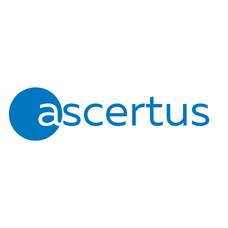Ascertus: Migrating your iManage work document management system
Over the last few years, we have seen a seismic shift in technology adoption, with organisations moving their infrastructure to the cloud. Consequently today, cloud-based applications are no longer seen as emerging technologies – they are now a default choice. The latest Gartner statistics show that 85% of organisations will embrace a cloud-first principle by 2025. So, why has cloud computing become so popular?
The answer is simple. For enterprises, cloud computing eliminates the need to buy hardware and software and invest in expensive infrastructure resources to maintain them. All this is undertaken by the vendor, which in turn reduces the enterprise’s technology footprint (e.g., servers), making technology management and support a lot easier for the IT department.
So, if you are looking to transition your iManage Work document and email management system (DMS) to the cloud, there are considerations that should be addressed prior to the cloud migration. And perhaps the most valuable step – one that can potentially assure a positive outcome – is a Cloud Readiness Health Check. By this I mean a detailed and comprehensive review – of the technical state and stability of the system, the server infrastructure, application integrations, mobile working, and the local client PC environments – but also of how the users perceive the system and any issues they may be encountering, that must be redressed before moving to the cloud environment.
Here are four areas to focus on in the Health Check, if you’re migrating your on-premises iManage Work DMS to the cloud:
- Design of the DMS
A key consideration is to review the design and configuration of the document management application, especially if your firm has been using the DMS for many years, to determine if the taxonomy and design is still meeting the needs of your firm. Particularly in the current hybrid and remote working environment, working practices may have changed and there may be newer requirements that end users have for day-to-day business processes. - Integration with other business applications in the cloud
DMSs are often integrated with other applications such as practice management systems, workspace management solutions, template management, electronic signatures and so on. Prior to moving the DMS to the cloud, it’s worth proactively reviewing to ensure that all the integrations are also cloud compatible. Identifying any potential issues for resolution prior to the move will ensure a smooth transition. - State of play of databases
If you are moving your firm’s iManage DMS to the cloud, it’s likely that the organisation may have been using the application on-premises for a reasonable length of time – which means that you have a sizeable amount of data residing in the solution. So, it’s a good time to tidy up your databases and libraries so that you systematically archive old data and only migrate clean, useful and useable data to the cloud application. This will go a long way in enhancing adoption of the solution in the cloud as efficient access to the “right” data will deliver productivity gains to users. This exercise is also valuable from a data governance standpoint. For instance, you can set up automated processes for data privacy, protection, retention and deletion – as well as records management – in the cloud solution, right from the start, to make compliance with legislations such as the GDPR, a matter of course in the firm. - Agility and scalability
The cloud platform offers dynamic scalability. For example, the iManage Work DMS in the cloud can handle – quite literally – 10’s of billions of documents and emails alongside millions of users. So, redirect your resources to more valuable activities. Adopting iManage Work in the cloud removes the infrastructure overheads associated with one of the largest / most critical core systems. This will free up resources and investment from the repetitive maintenance and upgrade cycles which add no value to the business.
As some new capabilities are only accessible via the cloud, identify and consider their provision for users. For example, via the cloud application, users can benefit from a ‘global matter file’ in the DMS, a capability that could be very beneficial if your firm is geographically spread out across offices and jurisdictions. Likewise, you might want to look into optimising the DMS’s integration with Microsoft 365 including Microsoft Teams, so that users can take advantage of advanced collaboration capabilities.
All this will ensure that your firm derives the highest possible return on your investment in cloud technology and most importantly, your users gain exceptional productivity and efficiency benefits – and ultimately a much improved user experience.
Ascertus Cloud Readiness Health Check
At Ascertus, we undertake all of the above mentioned areas and more – before embarking on an iManage Work migration to the cloud. Our Cloud Readiness Health Check report presents a detailed summary of the gaps in the IT infrastructure, the risks that exist and crucially, key considerations for deploying new functionality in the cloud environment. By doing this, we ensure that cloud migrations run smoothly, and that there are no drastic surprises such as unforeseen business disruption, spiraling expenditure and most important of all end user dissatisfaction – all of which must be avoided at all costs.
Our methodology is well-honed, we have delivered hundreds of iManage cloud migration projects across Europe, to end user satisfaction. If you are considering moving your iManage application to the cloud, please contact us



